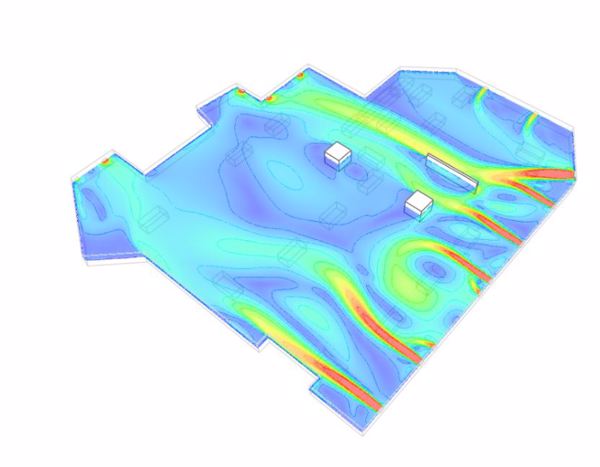CFD Modelling for Car Park Ventilation to Improve Buildings and Reduce Costs

erbas™ SUSTAIN can provide complex computational fluid dynamic (CFD) modelling approaches to provide performance solutions for buildings whilst also reducing ventilation costs in Class 2 to 9 building car parks.
Challenge: Conservative prescriptive provisions outlined in the NCC for Class 2 to 9 buildings car park ventilation requirements.
Solution: Performance based CFD simulation as a performance solution.
Benefits:
- Reduced ventilation system size
- Reduced system capital cost
- Visualised carbon monoxide (CO) concentration levels
Background: The National Construction Code (NCC) is a performance-based code that sets the minimum required level for the safety, health, amenity, accessibility, and sustainability of certain buildings. NCC Volume One covers the design and construction of multi-residential, commercial, industrial, and public assembly buildings and some other associated structures (i.e., all Class 2 to 9 buildings). Performance Requirements of the NCC are satisfied by a Performance Solution, a Deemed-to-Satisfy Solution, or a combination of both.
For car park ventilation systems, the prescriptive provisions outlined in the NCC are conservative, with ventilation systems rarely running at 100% of capacity. This usually results in more onerous ventilation requirements. Computational Fluid Dynamics (CFD) simulation is a suitable alternative to undertake a performance-based assessment as a Performance Solution, compliant with the NCC. CFD is the analysis of fluid flows using numerical solution methods. This performance-based solution method has a wide range of benefits including reduced ventilation system size, reduced system capital cost and visualised carbon monoxide (CO) concentration levels, to name a few.
The National Occupational Health and Safety Commission (NOHSC) has set an 8-hour time-weighted average exposure limit of 30 parts per million (ppm) for carbon monoxide. This ambient CO level over eight hours is equivalent to a carboxyhaemoglobin (COHb) level of 5%. This COHb level is considered the current acceptable risk that workers may be exposed to over a working lifetime of exposure. Using CFD simulation, CO concentration will be modelled at different sampling heights Above Finished Floor Level (AFFL). Results from the CFD simulation are then post processed to calculate the average CO concentration value. These values are compared against a set of certain CO concentration thresholds for compliance. Results can also be visualised to show CO concentration levels in different areas of carparks. Air flow velocity and CO concentration contours are shown in the figures below.
Check out the most recent project where we have used this approach: The Waterfront Hotel at Shell Cove NSW
Latest News, Resources & Media

Meet Bruce Skipp

Building a Better Proposal: What Sets Winning Bids Apart

Building-Integrated Photovoltaics

2025 Biophilic Design Awards

Circular Transition Indicators for the Built Environment

ClarkeHopkinsClarke’s Sustainability Series


